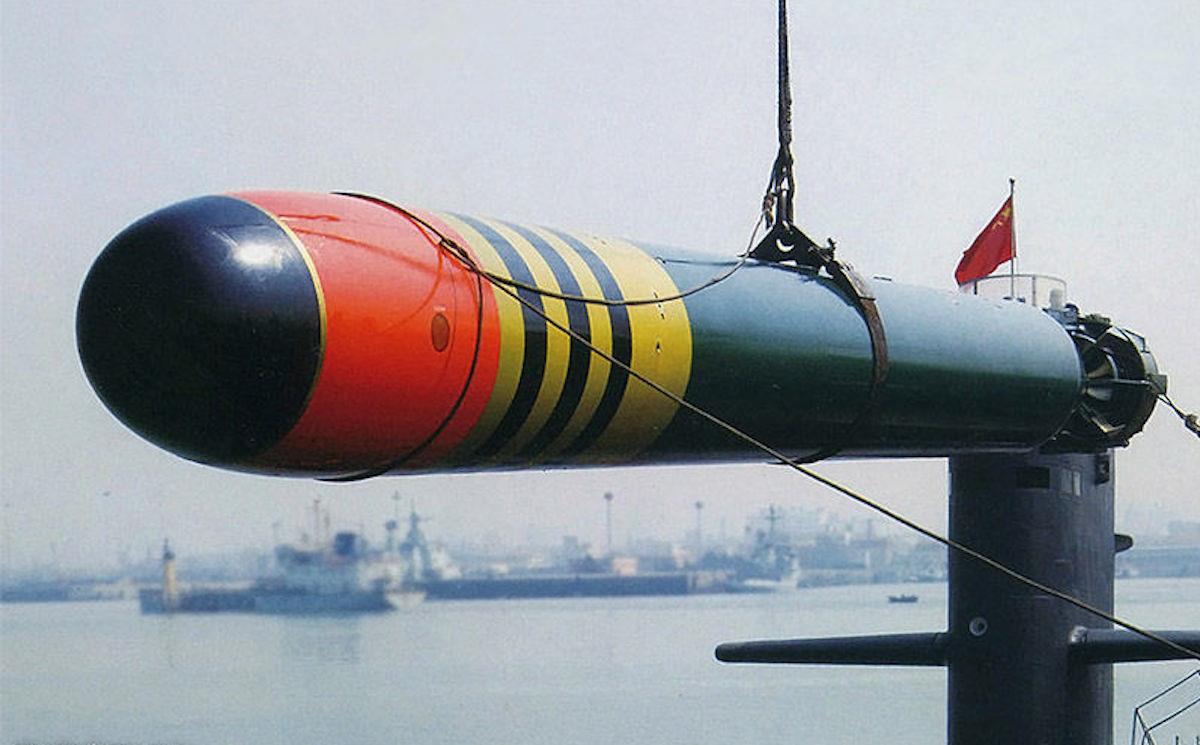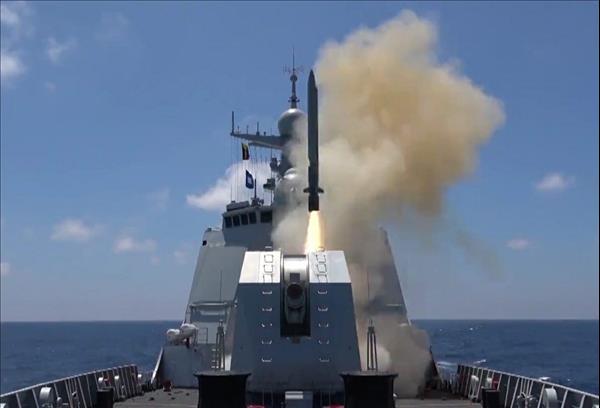
China Unveils Supersonic Missile-Torpedo Anti-Ship Weapon
China is developing an anti-ship missile that turns into a torpedo during its terminal phase, combining flight and underwater capabilities in one weapon to increase the probability of a successful strike.
This week, the South China Morning Post reported that China's new 5.4-meter hybrid weapon could cruise up to Mach 2.5 at 10,000 meters for 200 kilometers before transitioning to a supersonic sea-skimming mode for 20 kilometers. Upon reaching the final 10 kilometers to the target, it shifts into supercavitating torpedo mode traveling at 100 meters per second.
Lead scientist Li Pengfei and his team from the National University of Defense Technology in Changsha claimed that no existing shipboard defense system can protect against this“cross-medium” attack, with the missile capable of changing course at will or crash-diving up to 100 meters to evade shipboard defenses.
The article mentions that traditional boron-powered engines are designed only to work in the air, while supercavitating torpedoes use aluminum or magnesium fuels that react with water.
To overcome this challenge, Li and his team proposed a design for a boron-powered solid-fuel ramjet (SFRJ) engine that can function both in air and underwater in the September 8 issue of the Chinese domestic peer-reviewed Journal of Solid Rocket Technology.
An SFRJ consists of three main components, namely an air intake system, a combustion chamber and a nozzle, and is the simplest method of achieving supersonic flight. As it relies only on its forward motion to compress intake air, it has no moving parts. And although the design is simple, the combustion process is very complex.
The South China Morning Post notes that boron is a critical element for hypersonic weapon fuels. The highly-reactive element could quickly become a hotly contested resource as China, Russia and the US race for hypersonic weapon dominance.
The Chinese researchers noted that controlling the burn rate of the fuel rods is the biggest challenge to their design. Although their design features adjustable inlets and exhaust nozzles to maintain burn efficiency in different environments, the fuel rods are an issue.
They note that boron takes 30% of the total fuel weight in an air-breathing missile due to the other chemicals needed to control and extend the intense combustion. Their proposed design has double the boron content, which produces greater thrust than aluminum in water.
However, the researchers noted that the increased boron content could cause problems in mass production, ignition and combustion control. Also, thrust control is an inherent challenge in solid fuel engines.

China is upgrading its torpedo technology. Image of a Yu-6 torpedo first domestic Chinese torpedo designed to counter both surface ships and submarines. Photo: Facebook
In their design, the boron powder behaves as both solid and liquid when injected into the combustion chamber, making physical modeling or combustion control challenging. Additionally, since their design is solid-fueled, the combustion process cannot be stopped once ignited.
Still, the research team emphasized modifying the boron particles, improving the manufacturing process and further study of grain mass properties can solve the challenges. They also noted that China has made several advances in solid rocket fuels, including by applying multiple coatings on nanofuel particles to control their explosive properties.
While in theory this new anti-ship missile may be a formidable weapon, its unique flight characteristics and capabilities present technical challenges. Specifically, China's new anti-ship missile may encounter problems in its guidance systems.
Sea skimming is a flight profile used by combat aircraft and many other anti-ship missiles to minimize the chance of detection. It involves flying as close as possible to the water surface, utilizing a combination of very low altitude and sea state to fly below radars and substantially increase the difficulty of being shot down.
As the South China Morning Post noted, the new anti-ship missile enters a supersonic sea-skimming mode before entering supercavitating torpedo mode.
However, in an article for Naval Post , Ryan White mentions that supersonic sea-skimming missiles get extremely hot in flight, which prevents the use of infrared seeker heads. He also notes that during supersonic flight, a hot layer of ionized gas forms around the missile which blocks out radar waves and datalink communications.
These limitations make it necessary to use active radar seekers, which presents challenges.
Active radar seekers are more expensive than semi-active radar seekers, as they have both radar transceivers and receivers in one unit. Moreover, due to their use of batteries and small size, they have limited range and power compared to larger designs. They also are not sufficient to hit long-range targets without the help of more powerful ground, naval or air-based radar systems.
China's new anti-ship missile may encounter similar problems in supercavitating torpedo mode. Supercavitation uses cavitation effects to create a pocket of air or vapor surrounding an object traveling through water, reducing drag and enabling it to travel at very high speeds.
In a separate article for Naval Post , Dorian White notes several limitations of supercavitating torpedoes. First, supercavitating torpedoes have limited maneuverability, as sharp turns risk the torpedo's control surfaces touching the water, which could rip parts off.
Further, supercavitation is very energy inefficient, which may explain the short range of China's new anti-ship missile in supercavitating mode. Moreover, supercavitating torpedoes have a much smaller warhead than conventional torpedoes, as much of their energy is devoted to maintaining supercavitation in water.
As a supercavitating torpedo is essentially an underwater rocket, firing the weapon is extremely loud, which could easily be detected by sonar, enabling the target to take evasive maneuvers or locate the launching ship or submarine for counterattack.
Supercavitating torpedoes are also blind, as their high speed prevents wire guidance used by conventional torpedoes and thus, rely on their target not moving. However, their loud firing signature may negate their advantage of high-speed surprise.
As supersonic anti-ship missiles and supercavitating torpedoes remain untested in combat, it is unknown how China's new weapon combining features of both would fare in actual use.

Legal Disclaimer:
MENAFN provides the
information “as is” without warranty of any kind. We do not accept
any responsibility or liability for the accuracy, content, images,
videos, licenses, completeness, legality, or reliability of the information
contained in this article. If you have any complaints or copyright
issues related to this article, kindly contact the provider above.


















Comments
No comment